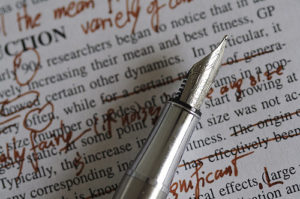
Last week I got my edits back from my editor. For a first book, these are the steps I went through:
- Researched and planned novel
- Wroted part of novel
- Realized novel needed to be trilogy and started to break it up and figure out a good end point for the first installment
- Workshopped novel with friends and fellow students at a variety of writing classes in NYC
- Several drafts later had a draft I was willing to show potential agents
- Massive edit with agent, cutting 60,000 words and writing 40,000 new words, with substantial rearranging and cutting of plot elements
- Second edit with agent, still a little rearrangement
- Third edit to nail some little stuff
- In my case, at this point a second agent entered the picture for reasons I’m not going into here, and I did another 2 round of edits with her, one that added a few scenes, and one that fixed some words, mostly
- Finally submitted to publishers
Something that a lot of people outside the industry don’t realize is that most agents do a ton of editorial work. Novels need to be in pretty good shape to be purchased by a publisher, so most writers do a few rounds of revision with their agent before an editor ever sees it.
By step 10 above, the novel was in pretty good shape. The edits I got back from my editor at Harper Collins were rather minor. I inputted 30 chapters worth of edits in about an hour of work. (The book is 36 chapters long, 521 pages double spaced 11pt Times New Roman in MS Word, 153,000 words.)
There was a little more plot and motivation clarification I needed to do in two later chapters, but otherwise, it was in very good shape. And that was largely because of the huge amount of outside editorial input I’ve gotten. I like to think I learned many lessons on this first novel that I can apply to the sequels, but I know that the sequels will not be as smooth at this stage of the game.
2 Comments
Writing is hard work and perseverance….enjoying and embracing the process positively enhances the creative outcomes.
Thanks for this “flow chart”. I was actually going to ask you exactly how this went. Would also be interesting to know how much time was spent in each step.
A few years back I read some early versions of James Herriot’s stories with comments on his development as a writer. Also interesting.